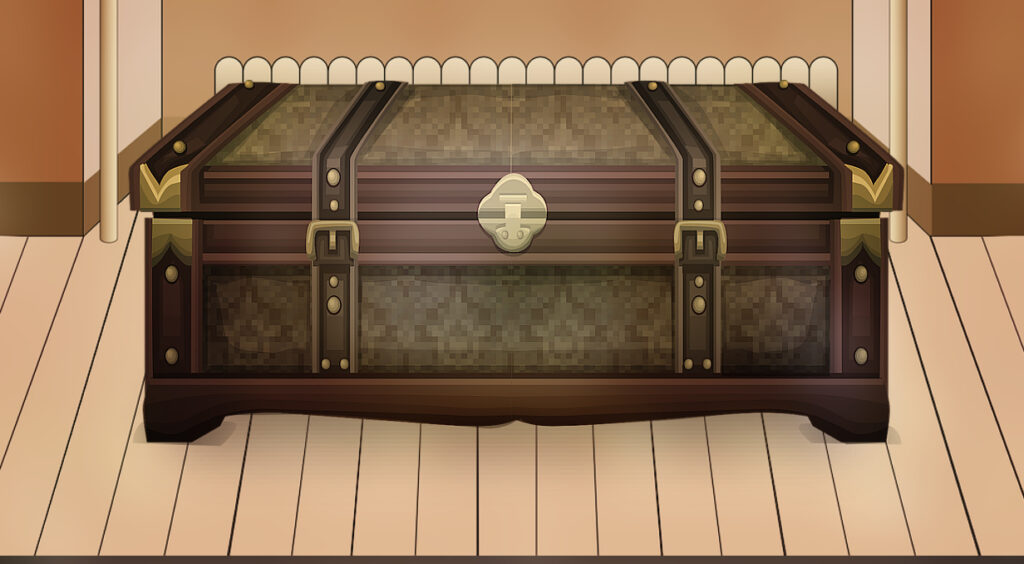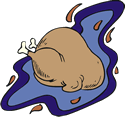
The students will explore the ideas of scarcity and choices by exploring a virtual model of the Mayflower. They will then pack a virtual suitcase making good choices about what they pack.
Introduction
Initiate a discussion that will prompt your students to think about the journey the Pilgrims made on the Mayflower.
Everybody loves the Thanksgiving holiday, right? What are some things you think about when you think about  Thanksgiving? Maybe you think about are turkey, stuffing, Massachusetts, Plymouth Rock, the Pilgrims, and the ship called the Mayflower.
Thanksgiving? Maybe you think about are turkey, stuffing, Massachusetts, Plymouth Rock, the Pilgrims, and the ship called the Mayflower.
Let’s take a closer look at the Mayflower. Would you like to take a trip on the Mayflower? How about living on the Mayflower for 66 days? What would you want to take with you from your room? What would you need to take with you?
Learning Objectives
- Explain why scarcity of space limits choices.
Resource List
- Scarcity: This EconEdLink glossary provides a large number of economic definitions.
- Video – “The Story of the Mayflower and the First Thanksgiving for Children: History for Kids” approximately 5 mins. and gives a good description of the voyage. Infographic (link below) is at 2:01. https://www.youtube.com/watch?v=brqIER2KHbE
- Infographic of the Mayflower: This graphic allows students to get a better understanding of the Mayflower that brought pilgrims to the Americas.
https://www.ocregister.com/wp-content/uploads/2017/11/ldn-l-focus-mayflower-1123.pdf - Article that describes the infographic. Older children can work their way through the description, younger students will need your guidance. “How 102 Pilgrims Crammed Inside the Mayflower” https://www.dailybulletin.com/2017/11/20/ahead-of-thanksgiving-day-2017-a-look-back-inside-the-mayflower/
- Virtual Suitcase Interactive: This EconEdLink interactive asks students to decide what is important to bring on a cross-sea journey and what they should leave behind.
Interactive Activity - Fill Your Suitcase!: This handout has students discuss what they would bring with them when they came to the Americas in the Mayflower and why.
Fill Your Suitcase! - You are the Historian – interactive game from Plimoth Patuxet Museum https://plimoth.org/for-students/you-are-the-historian
- If You Lived In Colonial Times by Ann McGovern: This book provides answers to frequently asked questions to colonial times that students may have about life in Colonial America. Playlist for Video reading of the book – the conclusion of the video series (the end of the book) details workers in Colonial times to extend the economics lesson. https://www.youtube.com/playlist?list=PLi0dfZLWcsDaSHBxcigT9kopVsuMWn4CN
Process
Note to teachers: The concept of scarcity, as economists use it, implies the following ideas: Individuals have wants that are, for practical purposes, unlimited. But the total resources of society, including natural resources, human resources, capital goods and entrepreneurship, are limited; that is why scarcity exists. Scarcity means that it isn’t possible for everyone to have everything he or she wants. No society has ever had enough resources to produce the full amount and variety of goods and services its members wanted. In a world of scarcity, producing any one good or service means that other goods and services cannot be produced, and trade-offs are inevitable.
Instruct your students to picture themselves as English Pilgrims in 1617. They are a people persecuted for their religious beliefs. Tell your students to imagine that their families have just gained passage on a ship called the Mayflower, bound for America. Tell your students they will need to start packing for the long voyage, but they must keep in mind that the Mayflower is not a large ship, and there will be 101 other people on the ship. Tell them to pack only the important items.
To help your students gain background knowledge about the Pilgrims and the Mayflower, have them explore this infographic of the Mayflower. https://www.ocregister.com/wp-content/uploads/2017/11/ldn-l-focus-mayflower-1123.pdf Older students can gain further information by reading this article that explains the infographic “How 102 Pilgrims Crammed Inside the Mayflower” https://www.dailybulletin.com/2017/11/20/ahead-of-thanksgiving-day-2017-a-look-back-inside-the-mayflower/
After reviewing the article and infographic, lead the class in a discussion of life on the Mayflower. Ask the students if they think they would have liked living on the Mayflower. Talk with them about how little space the Pilgrims had to live in. Explain that the limited space is an example of scarcity. Scarcity is not having all the goods and services people want. In this case, the people on the Mayflower did not have all the space they wanted.
*Suggestion: Conduct a brainstorming session in which the task is to list things the Pilgrims would need in the new land. Ask the students if they have ever packed a suitcase to stay for an overnight visit. Explain that, as they imagine themselves in the role of Pilgrims, they will have limited space in their suitcases, just like the Pilgrims had limited space. Below are some questions that can be used in discussion after the students have toured the Mayflower.
- What would the trip have been like?
- What would you have missed the most?
- Why didn’t the Pilgrims bring everything they wanted with them?
- How does the idea of scarcity help to explain why we can’t always get what we want? What was scarce on the Mayflower?
Have the students complete this interactive activity to learn more about the tough decisions the Pilgrims had to make. After the students have finished the activity, ask them to explain why they couldn’t get everything into their suitcases.
Conclusion
Discuss the choices the students made. Questions to focus on include: Could you take everything you wanted with you? Could the Pilgrims take everything they wanted? Why or why not? How does a scarcity of space limit your choices? What is the economic term for not having all of the goods we need?
Extension Activity
- Simulation: Plimoth Patuxet Museums has created a new online game that explores Wampanoag life prior to European settlement and the year leading up to the 1621 harvest feast, today known as the “First Thanksgiving.” The game investigates the interactions between the Wampanoag people of Patuxet and the earliest colonists known as the Pilgrims by exposing players to archaeological artifacts from the museum’s collections, primary source documents, and oral stories told from generation to generation. “You Are The Historian” directly responds to the increased demand for nuanced and fact-based history told from both an Indigenous and Colonial perspective. The Museum has created an experience that will transport visitors to Patuxet, the pre-European homeland of the Wampanoag, and immerse them in a story of cultural change and persistence that spans 12,000 years. Students will be able to further explore the rich historical context of the Indigenous and Colonial experiences during their earliest encounters through magical time travel, an anonymous tipster, mysterious riddles, historic artifacts and archives, and plain, old-fashioned smart thinking! https://plimoth.org/for-students/you-are-the-historian
- Students can read or watch If You Lived in Colonial Times by Ann McGovern to help them understand the concepts. See links in the Resource section above
Assessment
Students will complete this handout and write about their choices.